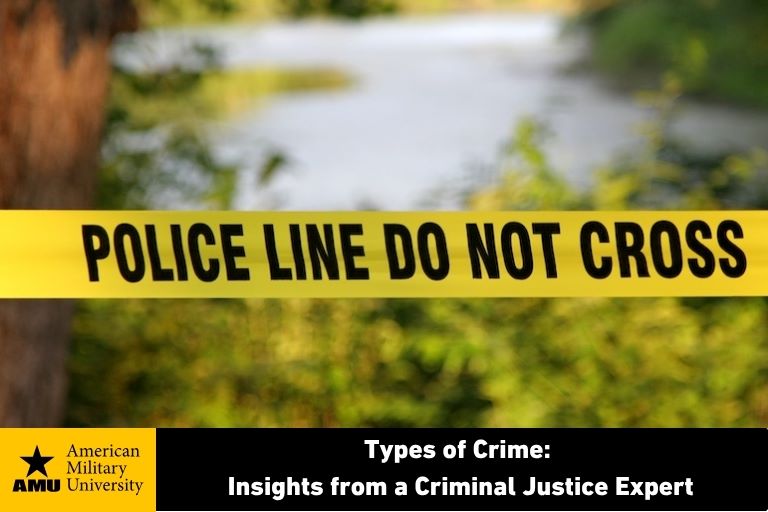By Dr. Jarrod Sadulski | 06/11/2025

Many types of crimes exist in communities throughout the United States and around the world. Criminal law and the criminal justice system exist to address and respond to crime.
There is a wide range of crimes that exist in law enforcement. Some are property crimes, and some are violent crimes involve physical harm to victims. These violent crimes include:
- Robbery
- Homicide
- Sexual assault
- Aggravated assault
- Domestic abuse
- Carjacking
- Terrorist acts
- Human trafficking
- Arson (particularly when it endangers lives)
When I was a police officer, I routinely responded to violent crime and have witnessed lives destroyed by these crimes. I have also spoken to victims who were targeted for various reasons. I’ve talked to victims who were terrified of a perpetrator. Some cases involved home invasion robberies, armed robberies, and attempted murder.
When you’re dealing with victims of violent crime, a timely and meaningful police response is necessary. In addition to conducting a criminal investigation, agencies should use victim advocates to support the people impacted by violent crimes.
Violent crime can cause victims to lose their sense of security. Sadly, anyone can be a victim.
Drug Crimes
In my career, I dealt extensively with drug crimes. I have worked in local law enforcement agencies, handling street-level narcotics.
During my time as law enforcement in Miami, Florida, I saw firsthand how illegal drugs devastated lives. I recall a case involving an 18-year-old female, Kelly, who we encountered in an area known for crack cocaine. Kelly was a college student at a local school who had experienced a falling-out with her mother.
She was likely a victim of child abuse and ended up on the streets. Unfortunately, it did not take long for Kelly’s life to unravel.
Despite our warnings about sexual abuse, the dangers of illicit drugs, and the risks of couch-surfing among people she believed were her friends, she continued down a perilous path. Within months, she became addicted to crack cocaine, dropped out of college, and became a prostitute.
We continuously offered Kelly access to community-based services to help her addiction. When that didn't work, we arrested her repeatedly, hoping that intervention through the criminal justice system might help. Sadly, Kelly died from a drug overdose after six months.
Unfortunately, tragic stories like Kelly’s are too common. Drug crimes can also lead to other violent offenses, such as sexual assault, often involving the use of date rape drugs.
Human Trafficking
A crime that is becoming more and more prevalent is human trafficking. There is a common misconception that human trafficking typically occurs when a child is abducted by a stranger in a van near a school bus stop.
While that type of crime does happen, crimes involving human trafficking more often involve grooming and psychological manipulation. Human traffickers seek the vulnerabilities of their victims. They monitor the internet and social media for children and teens who reveal their emotional or social distress.
For example, if a child posts something like “I hate my parents!” or “No one understands me!”, that can be a prime opportunity for a trafficker to initiate contact. The trafficker then attempts to exploit the victim’s vulnerabilities.
Traffickers study their victims. They research all the victim’s information available through social media sites, blogs, or other online sources to learn personal details such as the victim’s interests or activities.
Using this information, the traffickers create a false persona designed to appeal to their victims. Once trust is gained – often through false promises, gifts, and compliments – the traffickers convince the victim to agree to a face-to-face meeting.
Once traffickers gain control through force or coercion, the victim is in a dangerous and difficult situation. Often, traffickers force victims into sex trafficking by using threats, guilt, and physical harm. They may reinforce compliance by telling their victims the abuse is their fault or threaten harm to their families or to the victim.
It is common for traffickers to exert control over their victims by speaking on their behalf, controlling their money, and restricting access to identification and personal belongings.
Human trafficking exists in all 50 states and around the world, and anyone can become a victim of human trafficking. As a result, it is essential for parents to educate their children about online sites and their hazards.
Sextortion
Sextortion is one of the fastest-growing online crimes targeting teenagers. Sextortion involves using sexually explicit images to blackmail a victim for money or to force them into sex trafficking.
Criminals often threaten to release the explicit images unless their demands are met. Sadly, some teenagers have died by suicide because of sextortion. According to the Federal Bureau of Investigation (FBI), anyone can be a victim of sextortion, but young males aged 14 to 17 are disproportionately targeted.
I have provided presentations to parents across the nation on the dangers of sextortion. During my first presentation in Fort Worth, Texas, I advised parents to check their children’s phones. I also explained the meaning of common emojis that can be used by criminals and their teenage victims for sextortion.
Shortly after the event, the event organizer contacted me. A parent followed my advice and discovered that their son was a victim of sextortion.
To children or teenagers, being blackmailed by the threat of publishing explicit images online can make them feel like there’s no way out or that they have no one to turn to for help. As a result, the victims are potentially at risk of suicide.
If a parent discovers that their child is a victim of sextortion, there is a free resource through the National Center for Missing and Exploited Children (NCMEC) called Take It Down. The Take It Down program can remove online nude, partially nude, or sexually explicit images and videos for anyone who was under the age of 18 when the images or videos were taken.
According to the NCMEC, a unique digital fingerprint or hash value is assigned to each image, which is used to detect and remove the offending online content. For instance, there is a Nigeria-based group called the Yahoo Boys who are especially responsible for this type of crime.
They coerce children in the United States into sending sexually explicit images and then threaten widespread distribution if they don't receive the extortion payment. The Yahoo Boys are so brazen that they have posted instructions on social media explaining how to carry out sextortion schemes.
Financial Crimes
Financial crimes, which can also be known as white-collar crimes, represent a complex category of crimes that present unique challenges to law enforcement due to their global reach. For instance, someone from the other side of the world can be responsible for fraud, cyber-attacks on financial institutions, or money laundering.
White-collar crime is a financially motivated crime that can be committed by individuals, businesses, or government officials. Among other illegal activities, white-collar crime can involve insider trading, employee theft (stealing money from a register or safe or committing embezzlement) and tax evasion.
Other types of financial crimes may include securities fraud, bribery, and identity theft.
Property Crimes
Property crime is also considered criminal activity, and it can involve offenses such as residential burglaries or motor vehicle theft. Additional examples of property crime include:
- Trespassing
- Possession of stolen property
- Vandalism
These crimes can be committed by a family member, friend, or stranger.
Inchoate Crimes
Inchoate crimes – crimes that were begun but not completed – also deserve attention by law enforcement officers. Inchoate crimes include actions that move toward committing a crime, even if the intended crime was never fully carried out by the offender. For example, inchoate crimes include attempted homicide, attempted fraud, attempted sexual assault, or a conspiracy to commit a crime (when someone encourages another person to commit a crime).
The solicitation of prostitution is also an example of inchoate crime. If someone attempts to hire another person for sex but no exchange of funds takes place, it may still be considered an inchoate crime.
Prosecuting an inchoate crime can be more challenging since the offender didn't follow through on the crime. In such cases, a thorough, accurate police report is essential to document the intent and elements of the offense.
The Role of Evidence and Law Enforcement
The successful arrest and prosecution of criminals often depends on well-documented evidence. For a successful case, a police report should contain all the relevant elements of the law that was violated.
The legal system is responsible for issuing punishment and accountability for crimes. An offender has the right to due process, which includes the opportunity to see all the physical and other evidence against them. An offender typically has access to the police report used to document the evidence against them.
This evidence typically varies, based on the crime and circumstances. For example, evidence associated with violent crime, such as rape or homicide, will be different as compared to a burglary or theft.
Evidence in a rape or other violent crime may include images of injuries, DNA samples from a crime scene, and other types of evidence.
In a homicide investigation, the evidence is likely to include forensic reports that reflect the time of death, cause of death, and circumstances around the death.
Homicide offenses are typically investigated by specialized detectives and crime scene personnel. These investigations are very detailed and can be quite lengthy. Nearly everyone involved in the investigation of homicides will submit a report of their involvement in the case.
For vehicle burglaries, the evidence may include tools used in the crimes committed – such as a hammer – as well as witness statements and police officer notes on suspicious activity in the area at the time.
Improving Safety through Crime Prevention
Public safety is one of law enforcement's primary responsibilities. Proactive policing can help to reduce crime rates and mitigate violence and other crimes within the community.
In addition to investigating crimes, law enforcement agencies are tasked with arresting offenders and collecting sufficient evidence to ensure a suspected perpetrator is found guilty.
Crime rates that involve aggravated assault, simple assault, or burglary and other property crime can serve as indicators of law enforcement effectiveness. There is less fear within a community when crime rates are low. For example, homicide data can reflect the overall level of violence in a particular area.
The law exists to protect individuals, but citizens also have a role in reducing their risk of being targeted by an offender. Taking steps such as trimming down bushes and trees (where criminals can hide) around your home, staying alert, and reporting suspicious activity can significantly reduce your chances of becoming a victim.
AMU’s Criminal Justice Degrees
For students who are interested in acquiring a knowledge of criminal acts, motivations, and laws, American Military University (AMU) offers four criminal justice degrees:
- An online Associate of Arts in Criminal Justice
- An online Bachelor of Arts in Criminal Justice
- An online Bachelor of Science in Criminal Justice
- An online Master of Arts in Criminal Justice
Taught by faculty members familiar with law enforcement and criminal justice, course in these degree programs include juvenile delinquency, evidence and procedures, emergency and disaster incident command, and criminal investigation. Other courses include criminal law, criminology, criminal profiling, digital forensics, and crime analysis.
For more details, visit AMU’s criminal justice degree program page.
Note: These degree programs are not designed to meet the educational requirements for professional licensure or certification in any country, state, province or other jurisdiction. These programs have not been approved by any state professional licensing body and does not lead to any state-issued professional licensure.

Dr. Jarrod Sadulski is an associate professor in the School of Security and Global Studies and has over 20 years in the field of criminal justice. He holds a bachelor’s degree in criminal justice from Thomas Edison State College, a master’s degree in criminal justice from American Military University, and a Ph.D. in criminal justice from Northcentral University.
His expertise includes training on countering human trafficking, maritime security, mitigating organized crime, and narcotics trafficking trends in Latin America. Jarrod has also testified to both the U.S. Congress and U.S. Senate on human trafficking and child exploitation. He has been recognized by the U.S. Senate as an expert in human trafficking.
Jarrod frequently conducts in-country research and consultant work in Central and South America on human trafficking and current trends in narcotics trafficking. Also, he has a background in business development.

